We hope that each of you, our readers, will enjoy and appreciate this article we present about these 5 Herbaceous Plants of Georgia. It was certainly our pleasure to gather the information for you. May it provide you with both education and increased awareness.
Certainly, these few species listed herein represent only a portion of the similar marvels found in this area. It’s our belief, though, that they serve as excellent representations of the wonders that exist. Check out some of our other articles for similar marvels.
American Wisteria
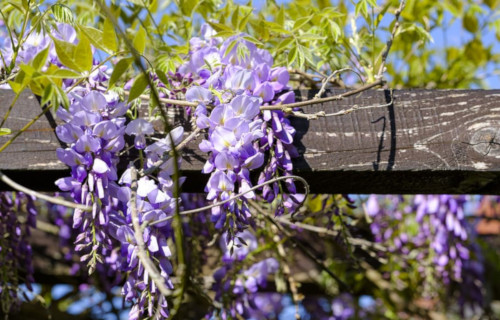
American Wisteria Facts
- Leading off this article about 5 Herbaceous Plants of Georgia we present the mesmerizing floral beauty known as the American Wisteria.
- Most notably, the term we’ve used herein applies to a magnificent variety of woody climbing vine, from the Family Fabaceae. Professional researchers and botanists, however, typically refer to it by its very similar scientific name.
- That’s the comparatively simple, for a technical term, name of Wisteria frutescens. The renowned Swedish botanist Carl Linnaeus made the first official description of this gorgeous flora. This action occurred in the late 18th century.
- Much like many other beautiful plants, its great beauty conceals a somewhat dark secret, though. That holds true due to the fact that many parts of the seemingly delicate species contain a type of toxic chemical known as a saponin.
- Ingestion of even a few of the seed pods it produces can cause extremely unpleasant symptoms. These experiences rarely prove fatal to the hapless victim, however. Nevertheless, cautions should be taken when interacting with the beauty.
- For the moment, the fabulous American Wisteria appears to have a stable population throughout the entirety of its natural range. This also appears, at least for the moment, to hold true throughout the entirety of its native range.
- It also now appears in many parts of the world as a decorative plant. The IUCN, therefore, currently has no listing for it. It could be considered to be facing at least one threat to its existence, though. That would be the danger of climate change.
American Wisteria Physical Description
The fabulous species known commonly as the American Wisteria represents a stunning variety of flora. But its beauty alone isn’t the only amazing quality it possesses. Nature and evolution, it seems, truly blessed this particular variety of Angiosperm.
That’s because this marvelous vine also has the impressive ability to grow to incredible lengths. In point of fact, individual specimens of this particular variety of Wisteria sometimes reach staggering lengths. Some measure as much as 50 ft (15 m).
The stunning American Wisteria also has yet another quality to add to its visual appeal, however. That’s the fact that it also produces numerous clusters of beautiful flowers. The delightful hues of these blossoms, in such numbers gives it a magnificent presence.
These beauties further typically develop with a lovely blueish-purple color. Remarkably, those delicate clusters sometimes grow to as long as 6 in (15 cm). The foliage, meanwhile, consists of shiny dark-green leaves that range in length from roughly 6-12 in (15-30 cm).
- Kingdom: Plantae
- Phylum: Angiosperm
- Class: Eudicots
- Order: Fabales
- Family: Fabaceae
- Genus: Wisteria
- Species: W. frutescens
American Wisteria Distribution, Habitat, and Ecology
Quite unfortunately, the breathtaking vine known as the American Wisteria evolved as native to a restricted portion of North America. That regrettably limited zone of habitation currently consists of only certain portions of the southeastern section of the United States.
More specifically, the marvelous variety of flora mainly appears from the state of Virginia to the state of Texas. Scattered populations, however, also appear in the states of New York and Michigan. Human actions may have potentially spread the plant further.
Even within this restricted range, however, the gorgeous vine has definite preferences in its choice of habitat. That’s because, when left to its own devices, it appears almost solely in regions consisting of various wetlands, and sometimes along some river banks.
The fascinating plant’s also an almost unsurpassed opportunistic climber. In fact, this incredible species, clings to and climbs virtually any support available to it. Perhaps most commonly, though, this available support consists of various trees.
The magnificent American Wisteria further distinguishes itself from related species in yet one more fashion. That holds true due to the fact that, unlike those of other types of Wisteria, its blooms possess no noticeable fragrance. The reason for this remains a mystery.
Blooming in the very early Spring, those same blossoms also have a characteristic different from related species. That’s because they evolved very short blooming periods. Wherever it appears, this gorgeous work of Nature also prefers direct sunlight.
Smooth Purple Coneflower
Smooth Purple Coneflower Facts
- Next up in this compendium of 5 Herbaceous Plants of Georgia is the intriguing variety of flora called the Smooth Purple Coneflower.
- The most often used name for this amazing marvel of Nature and evolution is that of the lengthy descriptive term used herein. Surprisingly, though, for the moment, this truly unique variety of flora has no other generally accepted common name.
- Among professionals, however, it’s more often referred to by its scientific name. That term, as such names often do, remains somewhat difficult for the non-professional to pronounce. That’s because it bears the technical name of Echinacea laevigata.
- It’s also worth noting that botanists did not even identify the Angiosperm until 1929. At that time, a two-man team of researchers accomplished the first formal recognition of it as a separate species. The men were Charles Boynton and Chauney Beadle.
- Regrettably, the wildflower does not appear to have ever had a particularly broad zone of habitation. Not surprisingly, though, that’s now been even further reduced, largely through the actions of man. That’s mainly due to our explosive expansion.
- Sadly, this reduction in its territorial range also reduces its overall population. Due to this, the IUCN presently lists the marvelous plant as Near-Threatened. That status appears reflected on the organization’s published Red List of Threatened Species.
- The Smooth Purple Coneflower faces multiple threats to its continued existence as a species. Direct human expansion into, and resulting destruction of, its native territory isn’t the only danger it faces, though. Climate change now endangers it as well.
Smooth Purple Coneflower Physical Description
The intriguing Smooth Purple Coneflower impresses those who encounter it for a variety of reasons. Though sheer size, therefore, isn’t the only factor in that condition, it certainly ranks among them. This holds true since the plant attains some respectable measurements.
It further resembles its close relative, the common echinacea, in this trait. This particular species attains a stem height of as much as 5 ft (1.5 m)! That same stem typically develops as quite thin, and strongly vertical in nature. It’s also mainly devoid of any foliage.
Scattered leaves do appear, however, in some instances. When these do make an appearance, though, they appear at random intervals on the smooth stem. Each of these structures further develops with a highly elongated, lance-shaped structure, and a dark green shade.
While the smoothness of the stem serves as part of the common name, it’s the unique flowers of the plant that form the rest. The perennial herb produces a single bloom atop each of the high-rising stems. This sometimes shows pink, but usually purple.
Meanwhile, the flower itself holds a fascinating structure of its own. It produces numerous, narrow florets, boasting the base colors. These also average about 3.2 in (8 cm) in length. In a remarkable design, these droop away from the head of the amazingly evolved flower.
The center of the Smooth Purple Coneflower holds yet another surprise for those who discover it. That’s because this section of the plant typically shows dark purple. The fruit the tantalizing flora produces additionally reaches roughly 0.2 in (0.5 cm) in total length.
- Kingdom: Plantae
- Phylum: Angiosperms
- Class: Eudicots
- Order: Asterales
- Family: Asteraceae
- Genus: Echinacea
- Species: E. laevigata
Smooth Purple Coneflower Distribution, Habitat, and Ecology
Sadly, both for the fabulous Smooth Purple Coneflower itself, and for those who appreciate Nature, the plant evolved as native to a very limited portion of the globe. That’s due to the fact that it appears endemically in only a small part of the continent of North America.
Originally, it appeared in only six states, in the Piedmont region of the United States. Unfortunately, it no longer appears in the states of Maryland and Pennsylvania. It therefore now only lives natively in Virginia, Georgia, South Carolina, and North Carolina.
This marvel of Nature seems deceptively delicate, at least at first glance, but actually isn’t. It further developed to survive, and even thrive, in a very specific combination of conditions. Many, if not most, plants, however, generally find one of those conditions inimical.
The Angiosperm mainly appears in well-lit open areas, within a forested region. That preference it shares with many flora, though. Yet, it also requires soil rich in magnesium and calcium. It also prefers the presence of limestone, and minerals of volcanic origin.
The uniquely-evolved Smooth Purple Coneflower also typically blooms from May to June, in its native region. It achieves pollination of those blooms via the actions of numerous local insect species. These include honeybees, bumblebees, and various local butterflies.
Though not fully certain, researchers believe its seeds are spread by birds, after consuming the fruit. In some observed instances, though, it also reproduces asexually. This it accomplishes by producing new plants from shoots from existing stems or rhizomes.
Purple Passionflower
Purple Passionflower Facts
- Now making its appearance in this listing of 5 Herbaceous Plants of Georgia we present the distinctly different plants named the Purple Passionflower.
- The descriptive term given to the plant perfectly serves as one of the common names for this lovely and distinct beauty. It also has several other common names, though. These include such terms as the wild passion vine and the maypop.
- In addition to these, as well as several more, it also has a somewhat evocative scientific name, as well. That’s the equally appropriate term of the Passiflora incarnata. Regardless of the term chosen, though, it remains a most distinctive variety of flora.
- The first official recognition of this particular variety of passionflower, of which more than 600 exist, remains unclear, however. That’s due to conflicting reports.The first naming of the extremely extensive, as well as beautiful, genus, though, occurred in 1745.
- This occurred at the hands of the renowned Swedish botanist, Carl Linnaeus. The first recorded discovery of a member of this marvelous group happened in 1569. At that time, the Spanish doctor Monardes discovered one of them in South America.
- Very fortunately, the stunning Purple Passionflower also appears to be maintaining a sufficiently stable population throughout its range. The IUCN, therefore, presently does not have a listing for it. Any such listing would appear on the organization’s Red List.
- The wonder of Nature should, nonetheless, be considered to be at some risk, at least in its native range. It now exists around the world as an ornamental plant. Habitat loss poses a potential threat, but climate change likely remains its greatest.
Purple Passionflower Physical Description
It bears noting that the magnificent flora known as the Purple Passionflower evolved as a form of perennial vine. Given that fact, its exact dimensions understandably vary. For one, the marvel of Nature can develop as either a trailing or climbing variety.
In either variety, though, it remains capable of attaining a comparatively significant length. More precisely, some specimens also grow to a length of as much as 30 ft (9.1 m). The majority of individual plants, however, generally remain much shorter than this.
Its leaves typically develop a 3-lobed structure, but 5-lobed varieties do spontaneously occur in Nature. This foliage also usually presents a dark green in color, and possesses a smooth texture. On average, these reach a length equaling roughly 2.4 – 5.9 in (6 – 15 cm).
Yet, its the breathtaking and distinctive blooms of the aptly-named Purple Passionflower that garner the most attention. These develop 5 bluish-white petals, but further possess a bright purple and white corona. This naturally forms the source of the common name.
Though not as impressive as the gorgeous flowers, the fruit of the plant nonetheless merits its own attention. This also typically develops as an oval-shaped berry, roughly the size of a chicken egg. Although its starts out green in color, it slowly yellows as it matures.
- Kingdom: Plantae
- Phylum: Angiosperms
- Class: Eudicots
- Order: Malpighiales
- Family: Passifloraceae
- Genus: Passiflora
- Species: P. incarnata
Purple Passionflower Distribution, Habitat, and Ecology
Unlike some of its related species, the Purple Passionflower evolved as native a relatively wide section of the globe. In point of fact, it appears naturally in a specific portion of the continent of North America. It has, however, spread nearly worldwide.
More precisely, this wonder of evolution grows endemically in the southern and southeastern parts of the United States. This covers an area that extends from Pennsylvania in the northeast to Kansas in the mid-west, and as far south as Texas to Florida.
In the wild, this marvelous plant evolved as highly adaptable. As a result, it appears in a wide range of habitat types. These frequently include such areas as open fields, rocky slopes, thickets, thinly wooded regions, and sometimes even roadsides and ditches.
The plant does, however, greatly prefer these areas to be in mostly direct sunlight. Given the nature of its habitat, the beautiful Purple Passionflower accomplishes the majority of its pollination via the efforts of various local species of bumblebees and hummingbirds.
In some respects, unfortunately, the flora sometimes becomes considered an agricultural weed. It spreads prolifically. Historically, though, some people used it in traditional herbal medicines, and thus appreciated its extreme reproductive capabilities.
Dwarf Crested Iris
Dwarf Crested Iris Facts
- Here, in this collection of 5 Herbaceous Plants of Georgia comes the miniature marvel understandably called the Dwarf Crested Iris.
- The somewhat descriptive term it’s known by serves as the most frequently used of the common names for this beautiful plant species. The delicate marvel also goes another, closely related general name. That’s the simpler term of the crested iris.
- The official scientific name for this creation of Nature and evolution is the comparatively simple term of Iris cristata. Regardless of which term one use to refer to it, however, one fact remains consistent. That’s the fact that, while gorgeous, it’s tiny.
- Though not the first to note it, the Scottish botanist, William Aiton holds the distinction of making the first official recognition of the plant as a separate and distinct species. This scientifically noteable feat the renowned researcher accomplished in 1789.
- Though it had long been known to the Indigenous Peoples of its native region, the American botanist John Bartram became the first European botanist to notice it. In the 1750’s, he sent several specimens to England. It’s been present there since 1776.
- For the moment, the IUCN has no listing for the Dwarf Crested Iris. Any such listing would appear on the organization’s published Red List of Threatened Species. This occurs both due to its numbers in the wild, as well as in global cultivation.
- It nevertheless facing some potential threats. Due to this, it’s listed as Endangered is a few parts of its native range. Habitat loss naturally represents one of the dangers it faces. Its greatest threat, though, most likely comes in the form of climate change.
Dwarf Crested Iris Physical Description
The delicate beauty of the Dwarf Crested Iris certainly merits attention from those who encounter it, of course. That aspect of its biology, however, manifests despite what some might think a disadvantage. That’s due to the fact that this marvel stands quite short.
More precisely, the perennial plant packs all of its outstanding beauty in a package that only attains a maximum height of around 6 in (15 cm). An average height for this floral variety, however, measures about 4 in (10 cm). Some specimens do not exceed 3 in (7.6 cm).
The iris variety also produces numerous long, slender leaves, which present a moderately deep green color. This rather distinctive foliage further develops in a highly variable length. These leaves extend outward in lengths ranging from 4 – 16 in (10 – 40.6 in).
Each plant typically produces a single bloom, though two develop on rare occasions. Remarkably, the petals of these tiny, delicate blooms develop in a wide variety of shades. Its sepals, meanwhile, have a white or yellow, central band, with a purple stripe.
Of further note is the extreme range of the shades the petals of the Dwarf Crested Iris manifest. These, in facct, develop across the spectrum lying between blue to purple to white. This range further varies from individual plant to plant, with no apparent pattern.
- Kingdom: Plantae
- Phylum: Angiosperms
- Class: Monocots
- Order: Asparagales
- Family: Iridaceae
- Genus: Iris
- Species: I. cristata
Dwarf Crested Iris Distribution, Habitat, and Ecology
Unfortunately for those who appreciate its beauty in the wild, the Dwarf Crested Iris possesses a somewhat limited native range of distribution. That’s due to the fact that the diminutive beauty appears naturally in only a small portion of the Northern Hemisphere.
That range of habitation covers portions of a total of nineteen states in the United States, in North America. These states appear in the northeastern, north-central, and southeastern portions of the country. Evidence further indicates it never spread elsewhere.
Somewhat surprisingly, this tiny Angiosperm evolved as endemic to soil containing relatively high ratios of lime. Given this, the plant most often appears naturally in areas such as rocky hillsides, ravines, oak woodlands, mountain ledges, and along gentle streams.
These regions, however, also need to meet yet another condition for the plant to thrive. These conditions must include the specific site to be well drained. If excessive moisture remains in the local soil, the species does poorly, severely limiting its potential expansion.
Pollination of the Dwarf Crested Iris principally occurs due to the activities of several types of bees. Several varities of hummingbirds, though, also favor the flowering plant, finding its nectar especially appealing. In cultivation, it also reproduces via root division.
It further prefers areas of cool, partially shaded conditions, but also does reasonably well in direct sunlight. Its magnificent flowers typically appear in early Spring. Afterward, the plant most frequently goes dormant during the local Winter season.
Local Native American populations, especially the Cherokee, have long used it in traditional medicines. Caution must nevertheless be taken with the little beauty. That’s because, like related species, many parts of this wonder of evolution are moderately poisonous.
Pine Lily
Pine Lily Facts
- Closing out this gathering of 5 Herbaceous Plants of Georgia we give you the lovely flora know simply as the Pine Lily.
- Somwhat surprisingly, the simple term applied serves as the common name of a beautiful, but often under appreciated variety of lily. It also goes by several other common names. These include the leopard lily, southern-red lily, and the Catesby’s lily.
- Professional researchers, though, have an altogether different term used for it. That’s because this marvel of Nature bears the official scientific name of Lilium catesbaei. Regardless of the name applied, it represents a truly fascinating ad appealing species.
- The seemingly delicate appearance of this flora belies its character, however. That’s because the work of Nature actually displays a remarkable degree of adaptability. In fact, it evolved to inhabit environments normally inhospitable to most types of lilies.
- Surprisingly, the IUCN does not yet list the Pine Lily on its Red List of Threatened Species. That may well change in the future, given changing conditions. The natural beauty nevertheless must be considered to be at risk, due to several factors.
- One of these perils, like many species, consists of habitat loss. This holds true mainly due to human encroachment on its natural habitat. Given the nature of its habitat, though, its most serous threat no doubt consists of ongoing climate change.
Pine Lily Physical Description
Perhaps most notably, the truly gorgeous Pine Lily constitutes a physically impressive type of flora. It also accomplishes this for more reasons than just its beauty. In this it clearly displays its relationship to the many other remarkabale varieties of lilies around the world.
That’s due to the fact that, in addition to its visual appeal, it also attains a much greater size than most. Additionally, as if the other facts weren’t enough, this description actually holds true because of its measurements in entrely two entirely separate categories.
In point of fact, the seemingly delicate plant ranks as the largest variety of lily on the continent on which it evolved. Yet the wonders do not end there. For starters, the long and thin, but relatively strong, straight stalk attains an average height of roughly 2 ft (61 cm).
Atop these stalks, furthermore, the plant produces its remarkably beautiful, large flowers. These blooms attain an average width measuring roughly 6 in (15 cm). Each of those same stalks also most commonly possesses only a few, comparatively small leaves.
Each of the large, magnificent blooms of the amazing Pine Lily produces a total of six separate tepals. These bend sharply outward from the center. Within the center stands a total of six thin stalks, topped with small structures, in which it produces its seeds.
This creation of Nature and evolution also dazzles those who encounter it with its array of hues. These natural colors also tend to vary significantly. The great majority, however, tend to be bright, primarily orange, with multiple spots. Other shades also occur occasionally.
- Kingdom: Plantae
- Phylum: Angiosperms
- Class: Monocots
- Order: Liliales
- Family: Liliaceae
- Genus: Lilium
- Species: L. catesbaei
Pine Lily Distribution, Habitat, and Ecology
Most unfortunately for those who appreciate it, the visually beautiful and impressive species commonly known as the Pine Lily inhabits a somewhat restricted range. Part of that lamentable fact, however, stems from its very nature. This sometimes happens in Nature.
For the moment, though, it remains unknown if this marvelous flora ever possessed a greater range. Given its particular environmental requirements, though, this appears to be unlikely. Research nevertheless remains ongoing into this, and other aspects of its nature.
That range consists of only a relatively small portion of North America. More specifically, it evolved as endemic to the coastal regions of southeastern United States. As a result, the plant appears in an area that extends roughly along the east coast, from Alabama to Virginia.
The majority of individuals appear in Florida. That’s understandable, given its physical needs. That’s because this variety of lily prefers very damp areas and requires a specific environment to thrive. This includes warm temperatures, high humidity, and acidic soil.
Although the Pine Lily requires warmth, it does not tolerate direct sunlight well. Yet, the astonishing Angiosperm also prefers a very specific, and uncommon, soil type. Incredibly, this fabulous wonder of Nature actually prefers regions containing a high level of acidity.
5 Herbaceous Plants of Georgia
We hope that each of you enjoyed reading, and hopefully learning from, this article we’ve written about these 5 Herbaceous Plants of Georgia. It’s also our hope that doing so has left you with either a new or renewed appreciation for such wonders of Nature.
Unfortunately, however, many of their kindred around the world now find themselves facing strong threats to their continued existence as a species. Many of those dangers, in fact, stem from the actions of mankind. We must do all we can to protect and preserve them all.
Check out our other articles on 5 Fabulous Mammals of Florida, Africa’s Many Geological Masterpieces, 5 Marvelous Mediterranean Sea Species, Earth’s Many Stunning Waterfalls
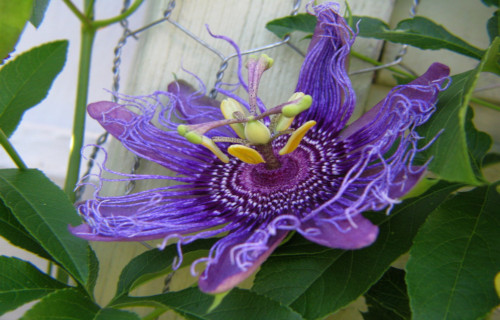
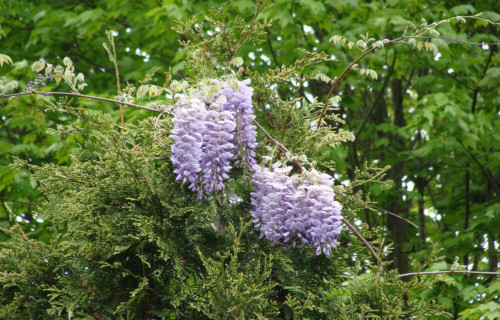
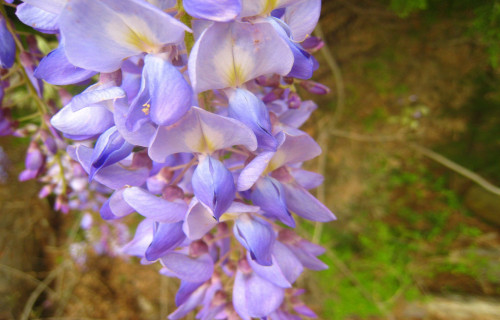
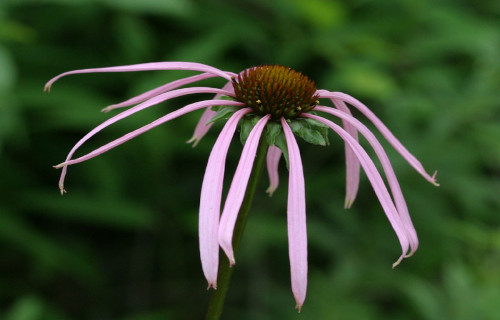
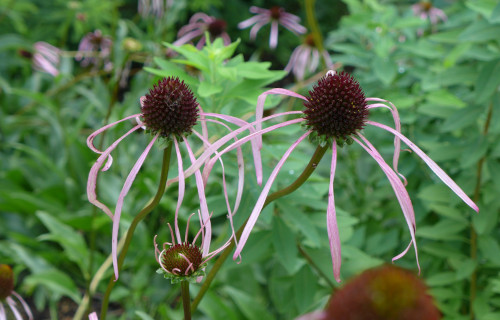
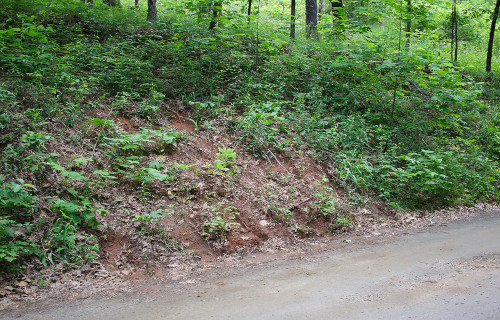
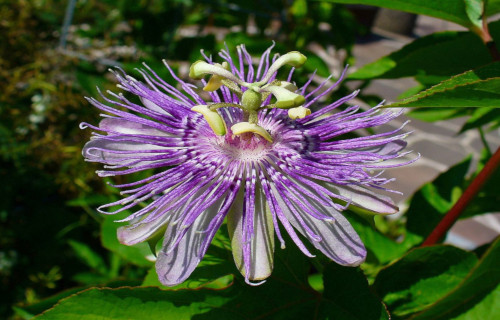
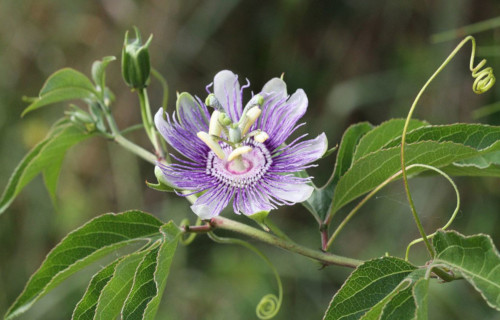
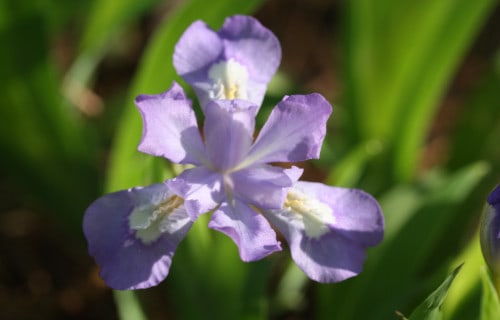
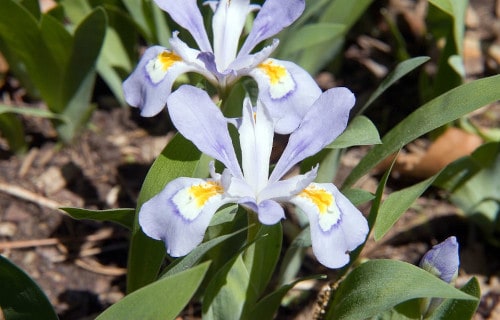
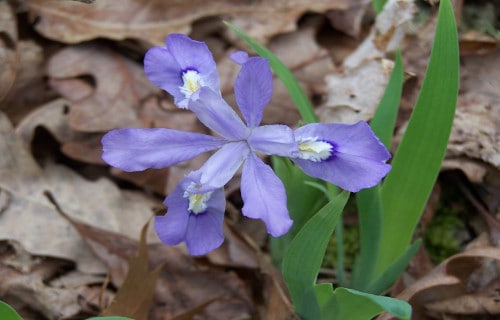
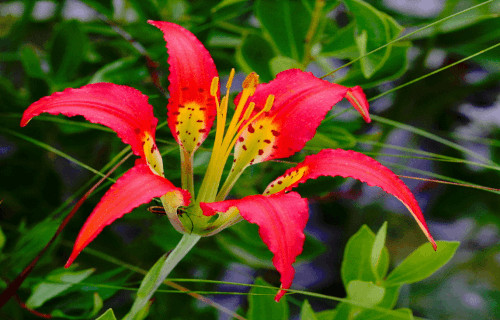
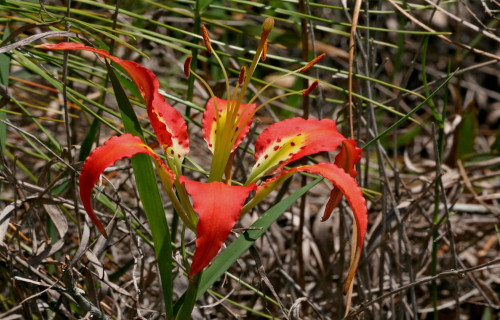
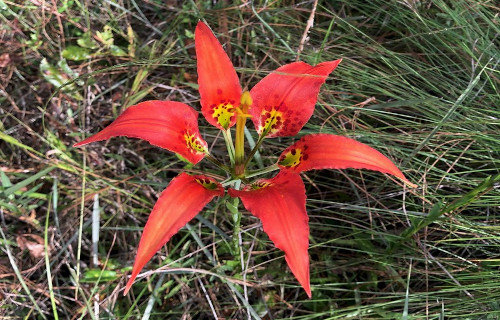









Leave a Reply